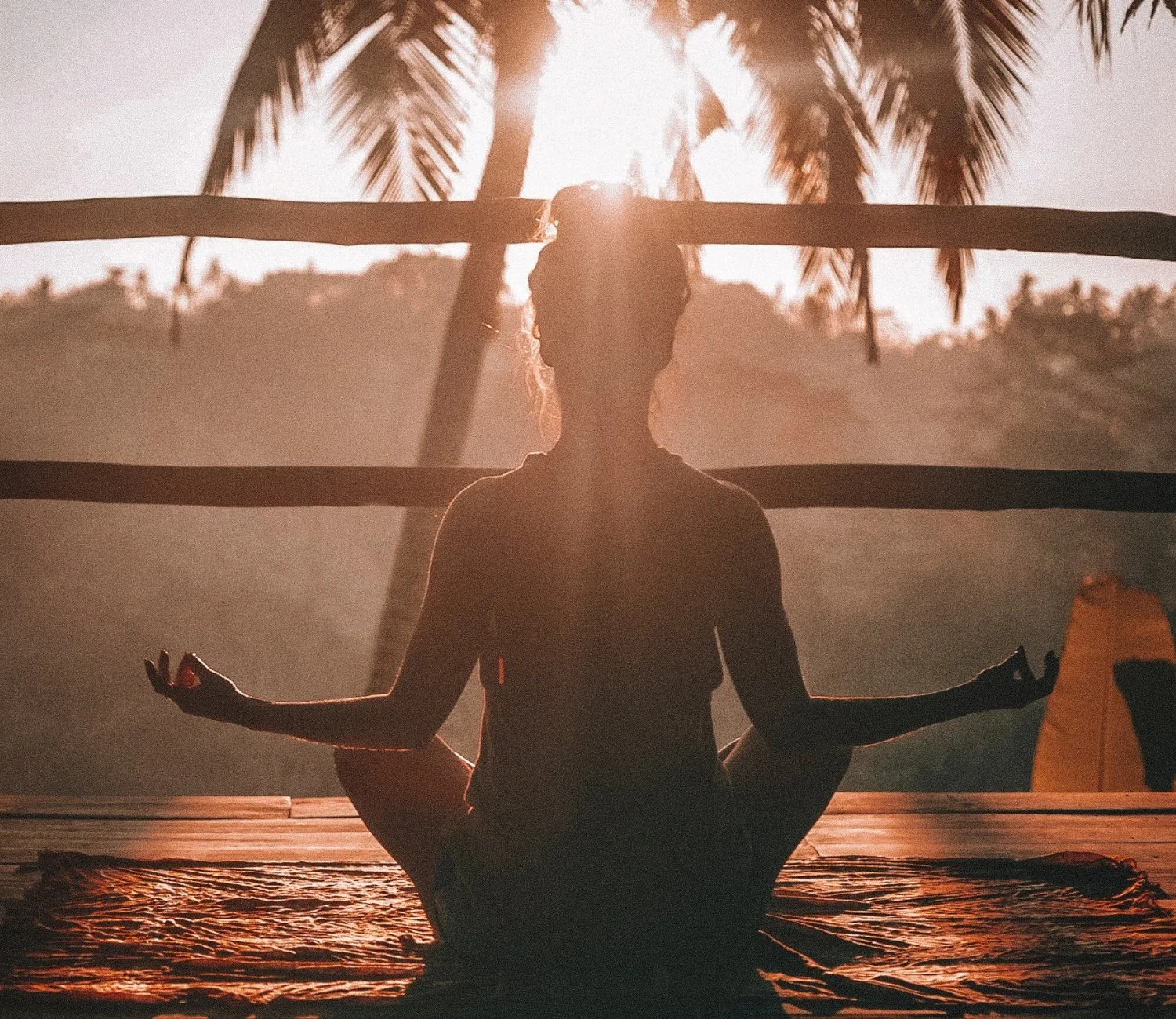Establishing a Home Meditation Practice
Person meditating under the sun.
The practice of meditation dates back thousands of years and has been adapted by many cultures and religions along the way, including Buddhism, Hinduism, Judaism, and Christianity. Yoga and meditation made a big surge in Western culture during the 20th century and have become so mainstream that many doctors are recommending it to their patients for its myriad of health benefits. Establishing a home practice is one of the best ways to work meditation into your everyday life. It can seem daunting at first since many of us think we “can’t” meditate for various reasons, but there are many simple ways to set yourself up for success.
Understanding Your “Why”
The most important part of a new habit is understanding why you are doing it. Why do you want to implement a home meditation practice? What are your goals for your meditation practice? Understanding all of this will help you stay on track when life gets in the way. Here are some of the common benefits of meditation:
Reduced stress
Better control of anxiety and depression
More quality sleep
Greater focus and concentration
Increased happiness
Enhanced self-awareness
As you start your meditation practice, take a few minutes to journal about why you’re doing it, being as specific as possible. Keep this somewhere to remind you to keep up with your new habit!
Focus on Consistency & Quality
Often, people think that meditation means having to sit for an hour in complete silence. This is not something that is attainable for many of us as we navigate busy lives. The length of time you meditate is less important than a consistent practice that works for you. It’s more important that you find the time, even if it’s only 3 minutes per day, than if you overwhelm yourself with a much longer practice.
Play around with what time of day works best but find what does and stick to it! You’ll be more successful if you don’t put it at the bottom of your to-do list and make sure it’s a scheduled part of your day. Maybe this is first thing in the morning, or maybe it’s right before bed.
How to Meditate for Beginners at Home
Set up your space – do your best to find a space where you won’t be interrupted for the amount of time you’re meditating. The room doesn’t have to be perfect, but being able to close a door is key. Try to face yourself away from things that may trigger your brain (i.e., don’t face that pile of laundry that needs to be folded, and maybe pick a blank wall instead).
Set a timer so you’re not distracted – sometimes wondering how long we’ve been meditating, or worrying that we are taking too long, is one of the biggest distractions. Set a timer for the amount of time you have, and let your wonder about the time go. When the timer goes off, you’ll be done! Pro tip – make sure to pick a soothing alarm sound and not a loud and stressful one, so you can softly come out of your meditation time.
Stretch & loosen the body – take a minute or so to open everything up. Roll your shoulders around, stretch your neck, and move around the spine a bit. This will help you settle into your space a little easier.
Establish a relaxing breath – take some breaths into through the nose and out through the nose, and gently allow the breath to deepen over time.
Soften your body – take a mental scan through and notice where you might be tightening anything up without realizing it. Unclench your jaw, release your shoulders, relax your hips, and soften your feet and ankles.
Practice silent or guided meditation – meditation doesn’t have rules. Maybe you’re the type who can sit in silence and just breathe, or maybe you need a guided meditation. There are lots of free resources for meditation through YouTube or other apps if you want to be guided through it!
Be curious & open to what comes up during your meditation – meditation might look different every day for you. Be understanding of the idea that you’re getting what you need from your practice, even if it doesn’t look how you expected. Some days your mind may wander more than others and that’s okay!
Journal about your experience – take a minute or two when you’re done to jot down anything that came up, or how it made you feel. This is great to come back to when you need some inspiration for your meditation practice or life in general!
Your meditation practice is just that – YOURS! Find what works for you and that’s the most important part…you’ll be surprised what you learn about yourself in the process.
Taryn Lagonigro is a certified yoga and meditation instructor, disability advocate, and busy mama to four. She is the co-founder of Extra Lucky Moms and co-owner of Iris Yoga. You can find her on Instagram @mindfullytaryn.
The Rise Journey: Offering Guided Meditation for Organizations
The integration of guided meditation into organizational learning experiences has gained significant attention for its potential to enhance employee well-being and productivity. Guided meditation sessions offered by Sarah-Valin Bloom, LCSW through The Rise Journey provide a unique and effective approach to fostering mindfulness, reducing stress, and promoting overall mental wellness among team members. By incorporating these sessions into corporate training programs or wellness initiatives, organizations can create a positive and conducive work environment, ultimately leading to improved focus, heightened creativity, and a more resilient workforce.
To explore how The Rise Journey can tailor guided meditation experiences for your organization's specific needs, visit our Guided Meditation page. Get in touch today to discover how meditation can contribute to a more harmonious and resilient workplace.

